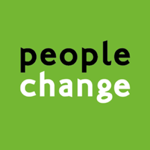Leading transformation: the new normal
“Clients sometimes want me to pass on my knowledge and methods to people who may be less ready for it, but who, according to them, can use it so badly. I’ve done that a few times in the past, because I’m very passionate about the subject myself, even though I already intuitively felt that they weren’t really open to it. But that’s where I got it wrong, because I can only pass on information to people who are open to it, otherwise there’s no communication and no growth possible. That frustrates me and also frustrates those involved. You can’t just send someone to me to ‘lighten up’ for a while,” according to Petra Groot of People Change.

Vulnerable
“We work in a transformation to the understanding that you need to be more vulnerable than usual in your professional environment, so that you can grow more personally. The people who like that get a lot out of it.
For example, when you find it difficult to control your boundaries and take on more work, because you want to maintain harmony so much. Then you have to learn to say no, without coming into conflict with yourself or a colleague. At first it seems an impossible choice between harmony and aggressiveness. What you learn is assertiveness: to take good care of yourself and also to dare to say no to someone else, without having the idea that you have to take care of them immediately.”
Bottom-up with sponsorship from above
“This also requires something from the managers. That is why we have a bottom-up program – it cannot be imposed from above. But of course we do need top-down sponsorship within the organisation. So we prefer to start with a director who also believes in personal development. After all, he can participate in the program and also be a sponsor of it. We don’t start when executives say: ‘I think that’s so cool for my people, but I’d rather not participate myself.’
The top must first go through a process themselves. This gives them new levels of insight, then they innovate and find new things to implement for themselves. They first have to go through the transformation and look at themselves: how did I actually do that? So that they can then take their colleagues along. They become a kind of mentor and so the new oil slick expands and becomes an integral part of the culture.”
Transformation program
“With our transformation program we take you out of surgery, let you reflect and solve things for yourself. Then you go back to the operation with a different level of consciousness. That’s why we send out an open invitation to which participants can respond themselves – the basis is voluntarity. You start with the People Change Scan to create insight into where you are now, where the problem may be and where you would like to go. This already gives a direction of what you have to go through in order to reach a new level of consciousness.”
Not without obligation
“Voluntary participation in our process is not without obligation, however, because I lead people precisely to those points where they stop themselves, keep themselves small and have certain convictions. People from our selection really want to work with this and start experimenting with new behaviour.”
GROW case
“All participants make their own GROW case. Your personality structure contains certain convictions and value systems with good sides and limitations. If you learn to deal with them, you have more freedom of choice. Then you will also be more open to the diversity of people. This gives you more opportunities and enables you to connect with your colleagues.
Where do you want to go? And what is the ideal situation? You experiment daily to practice different behaviour in difficult situations to see if you can get something different from what you had in the past. The more you integrate that and your daily actions, the more it becomes a new part of your personality structure and you look at the world in a different way. In this way you inspire your environment to start working in the same way.”
Permanent resolution of conflicts
“Colleagues notice different behaviour among the participants. All of a sudden, meetings go a lot smoother and are more focused. Participants who experience tension between themselves see how they themselves contribute to the conflict. If they can solve it themselves, they can also solve it with the other, which creates a lot more connection and therefore a better cooperation. In this way, the organisation gets a grip on unseen costs and everything runs much more smoothly. Employees also become happy when they can work harmoniously somewhere and there are few conflicts.
For example, someone who used to always clash with a colleague in meetings, now completes her sentences after six months and they have found a really good way of cooperating They know each other, know where the sensitivities lie and when they trod into those sensitivities. They can now be alert to them and say, ‘Look, now it’s happening again. This is not what we want. We’re going to do it differently.’
Moreover, when they address this through personal development, it is a permanent solution, rather than when someone would help to smooth out a conflict for a while. Because they have solved something in themselves and have been given tools for future situations.”
Mysterious process
“It’s an almost mysterious process due to the change of intent. My role is to interpret the events that are confusing, because often things fall away and at first it seems as if things are getting less.
That is the real transformation, because then you let go of the old value system with your old beliefs. This creates space in which something new can arise, which is more in the direction of who you really want to be.”
